Artist:
Gustav Leonhardt
Title:
Gustav Leonhardt Plays Bach
Year Of Release:
2012
Label:
deutsche harmonia mundi
Genre:
Classical
Quality:
FLAC (tracks)
Total Time: 9:43:22
Total Size: 3.46 GB
WebSite:
Album Preview
01. The Well-Tempered Clavier, Book I : Prelude and Fugue No. 1 in C Major, BWV 846
02. The Well-Tempered Clavier, Book I : Prelude and Fugue No. 2 in C Minor, BWV 847
03. The Well-Tempered Clavier, Book I : Prelude and Fugue No. 3 in C-Sharp Major, BWV 848
04. The Well-Tempered Clavier, Book I : Prelude and Fugue No. 4 in C-Sharp Minor, BWV 849
05. The Well-Tempered Clavier, Book I : Prelude and Fugue No. 5 in D Major, BWV 850
06. The Well-Tempered Clavier, Book I : Prelude and Fugue No. 6 in D Minor, BWV 851
07. The Well-Tempered Clavier, Book I : Prelude and Fugue No. 7 in E-Flat Major, BWV 852
08. The Well-Tempered Clavier, Book I : Prelude and Fugue No. 8 in E-Flat Minor, BWV 853
09. The Well-Tempered Clavier, Book I : Prelude and Fugue No. 9 in E Major, BWV 854
10. The Well-Tempered Clavier, Book I : Prelude and Fugue No. 10 in E Minor, BWV 855
11. The Well-Tempered Clavier, Book I : Prelude and Fugue No. 11 in F Major, BWV 856
12. The Well-Tempered Clavier, Book I : Prelude and Fugue No. 12 in F Minor, BWV 857
13. The Well-Tempered Clavier, Book I : Prelude and Fugue No. 13 in F-Sharp Major, BWV 858
14. The Well-Tempered Clavier, Book I : Prelude and Fugue No. 14 in F-Sharp Minor, BWV 859
15. The Well-Tempered Clavier, Book I : Prelude and Fugue No. 15 in G Major, BWV 860
16. The Well-Tempered Clavier, Book I : Prelude and Fugue No. 16 in G Minor, BWV 861
17. The Well-Tempered Clavier, Book I : Prelude and Fugue No. 17 in A-Flat Major, BWV 862
18. The Well-Tempered Clavier, Book I : Prelude and Fugue No. 18 in G-Sharp Minor, BWV 863
19. The Well-Tempered Clavier, Book I : Prelude and Fugue No. 19 in A Major, BWV 864
20. The Well-Tempered Clavier, Book I : Prelude and Fugue No. 20 in A Minor, BWV 865
21. The Well-Tempered Clavier, Book I : Prelude and Fugue No. 21 in B-Flat Major, BWV 866
22. The Well-Tempered Clavier, Book I : Prelude and Fugue No. 22 in B-Flat Minor, BWV 867
23. The Well-Tempered Clavier, Book I : Prelude and Fugue No. 23 in B Major, BWV 868
24. The Well-Tempered Clavier, Book I : Prelude and Fugue No. 24 in B Minor, BWV 869
25. The Well-Tempered Clavier, Book 2 : Prelude and Fugue No. 1 in C major, BWV 870
26. The Well-Tempered Clavier, Book 2 : Prelude and Fugue No. 2 in C minor, BWV 871
27. The Well-Tempered Clavier, Book 2 : Prelude and Fugue No. 3 in C sharp major, BWV 872
28. The Well-Tempered Clavier, Book 2 : Prelude and Fugue No. 4 in C sharp minor, BWV 873
29. The Well-Tempered Clavier, Book 2 : Prelude and Fugue No. 5 in D major, BWV 874
30. The Well-Tempered Clavier, Book 2 : Prelude and Fugue No. 6 in D minor, BWV 875
31. The Well-Tempered Clavier, Book 2 : Prelude and Fugue No. 7 in E flat major, BWV 876
32. The Well-Tempered Clavier, Book 2 : Prelude and Fugue No. 8 in E flat minor, BWV 877
33. The Well-Tempered Clavier, Book 2 : Prelude and Fugue No. 9 in E major, BWV 878
34. The Well-Tempered Clavier, Book 2 : Prelude and Fugue No. 10 in E minor, BWV 879
35. The Well-Tempered Clavier, Book 2 : Prelude and Fugue No. 11 in F major, BWV 880
36. The Well-Tempered Clavier, Book 2 : Prelude and Fugue No. 12 in F minor, BWV 881
37. The Well-Tempered Clavier, Book 2 : Prelude and Fugue No. 13 in F sharp major, BWV 882
38. The Well-Tempered Clavier, Book 2 : Prelude and Fugue No. 14 in F sharp minor, BWV 883
39. The Well-Tempered Clavier, Book 2 : Prelude and Fugue No. 15 in G major, BWV 884
40. The Well-Tempered Clavier, Book 2 : Prelude and Fugue No. 16 in G minor, BWV 885
41. The Well-Tempered Clavier, Book 2 : Prelude and Fugue No. 17 in A flat major, BWV 886
42. The Well-Tempered Clavier, Book 2 : Prelude and Fugue No. 18 in G sharp minor, BWV 887
43. The Well-Tempered Clavier, Book 2 : Prelude and Fugue No. 19 in A major, BWV 888
44. The Well-Tempered Clavier, Book 2 : Prelude and Fugue No. 20 in A minor, BWV 889
45. The Well-Tempered Clavier, Book 2 : Prelude and Fugue No. 21 in B-Flat Major, BWV 890
46. The Well-Tempered Clavier, Book 2 : Prelude and Fugue No. 22 in B flat minor, BWV 891
47. The Well-Tempered Clavier, Book 2 : Prelude and Fugue No. 23 in B major, BWV 892
48. The Well-Tempered Clavier, Book 2 : Prelude and Fugue No. 24 in B minor, BWV 893
49. Die Kunst der Fuge, BWV 1080 : Contrapunctus 1
50. Die Kunst der Fuge, BWV 1080 : Contrapunctus 4
51. Die Kunst der Fuge, BWV 1080 : Contrapunctus 2
52. Die Kunst der Fuge, BWV 1080 : Contrapunctus 3
53. Die Kunst der Fuge, BWV 1080 : Contrapunctus 5
54. Die Kunst der Fuge, BWV 1080 : Contrapunctus 6
55. Die Kunst der Fuge, BWV 1080 : Contrapunctus 7
56. Die Kunst der Fuge, BWV 1080 : Contrapunctus 8
57. Die Kunst der Fuge, BWV 1080 : Contrapunctus 9
58. Die Kunst der Fuge, BWV 1080 : Contrapunctus 10
59. Die Kunst der Fuge, BWV 1080 : Contrapunctus 11
60. Die Kunst der Fuge, BWV 1080 : Contrapunctus 12a
61. Die Kunst der Fuge, BWV 1080 : Contrapunctus 12b
62. Die Kunst der Fuge, BWV 1080 : Contrapunctus 18a
63. Die Kunst der Fuge, BWV 1080 : Contrapunctus 18b
64. Die Kunst der Fuge, BWV 1080 : Canon 14
65. Die Kunst der Fuge, BWV 1080 : Canon 15
66. Die Kunst der Fuge, BWV 1080 : Canon 16
67. Die Kunst der Fuge, BWV 1080 : Canon 17
68. French Overture in B minor, BWV 831 (Partita from Clavierübung II) : Ouvertüre
69. French Overture in B minor, BWV 831 (Partita from Clavierübung II) : Courante
70. French Overture in B minor, BWV 831 (Partita from Clavierübung II) : Gavotte I/II
71. French Overture in B minor, BWV 831 (Partita from Clavierübung II) : Passepied I/II
72. French Overture in B minor, BWV 831 (Partita from Clavierübung II) : Sarabande
73. French Overture in B minor, BWV 831 (Partita from Clavierübung II) : Bourrée I/II
74. French Overture in B minor, BWV 831 (Partita from Clavierübung II) : Gigue
75. French Overture in B minor, BWV 831 (Partita from Clavierübung II) : Echo
76. Italian Concerto in F major, BWV 971 (from Clavierübung II) : Allegro
77. Italian Concerto in F major, BWV 971 (from Clavierübung II) : Andante
78. Italian Concerto in F major, BWV 971 (from Clavierübung II) : Presto
79. Chorale Preludes, BWV 669-689 (from "Clavierübung III") : Kyrie Gott Vater in Ewigkeit, BWV 669
80. Chorale Preludes, BWV 669-689 (from "Clavierübung III") : Christe, aller Welt Trost, BWV 670
81. Chorale Preludes, BWV 669-689 (from "Clavierübung III") : Kyrie Gott heiliger Geist, BWV 671
82. Chorale Preludes, BWV 669-689 (from "Clavierübung III") : Allein Gott in der Höh sei Ehr, BWV 675
83. Chorale Preludes, BWV 669-689 (from "Clavierübung III") : Fughetta super "Allein Gott in der Höh' sei Ehr", BWV 677
84. Chorale Preludes, BWV 669-689 (from "Clavierübung III") : Fughetta super "Dies sind die heilgen zehn Gebot", BWV 679
85. Chorale Preludes, BWV 669-689 (from "Clavierübung III") : Fughetta super "Wir glauben all an einen Gott", BWV 681
86. Chorale Preludes, BWV 669-689 (from "Clavierübung III") : Vater unser im Himmelreich, BWV 683
87. Chorale Preludes, BWV 669-689 (from "Clavierübung III") : Christ, unser Herr, zum Jordan kam, BWV 684
88. Chorale Preludes, BWV 669-689 (from "Clavierübung III") : Aus tiefer Not schrei' ich zu dir, BWV 687
89. Chorale Preludes, BWV 669-689 (from "Clavierübung III") : Fuga super "Jesus Christus unser Heiland", BWV 689
90. Sonate für Violine und Cembalo in h-moll, BWV 1014 : Adagio
91. Sonate für Violine und Cembalo in h-moll, BWV 1014 : Allegro
92. Sonate für Violine und Cembalo in h-moll, BWV 1014 : Andante
93. Sonate für Violine und Cembalo in h-moll, BWV 1014 : Allegro
94. Sonate für Violine und Cembalo in E-dur, BWV 1016 : Adagio
95. Sonate für Violine und Cembalo in E-dur, BWV 1016 : Allegro
96. Sonate für Violine und Cembalo in E-dur, BWV 1016 : Adagio ma non tanto
97. Sonate für Violine und Cembalo in E-dur, BWV 1016 : Allegro
98. Sonate für Violine und Cembalo in G-dur, BWV 1019 : Allegro
99. Sonate für Violine und Cembalo in G-dur, BWV 1019 : Largo
100. Sonate für Violine und Cembalo in G-dur, BWV 1019 : Allegro
101. Sonate für Violine und Cembalo in G-dur, BWV 1019 : Adagio
102. Sonate für Violine und Cembalo in G-dur, BWV 1019 : Allegro
103. Sonate für Violine und Cembalo in f-moll, BWV 1018 : Largo
104. Sonate für Violine und Cembalo in f-moll, BWV 1018 : Allegro
105. Sonate für Violine und Cembalo in f-moll, BWV 1018 : Adagio
106. Sonate für Violine und Cembalo in f-moll, BWV 1018 : Vivace
107. Sonate für Violine und Cembalo in A-dur, BWV 1015 : (Andante)
108. Sonate für Violine und Cembalo in A-dur, BWV 1015 : Allegro assai
109. Sonate für Violine und Cembalo in A-dur, BWV 1015 : Andante un poco
110. Sonate für Violine und Cembalo in A-dur, BWV 1015 : Presto
111. Sonate für Violine und Cembalo in c-moll, BWV 1017 : Siciliano: Largo
112. Sonate für Violine und Cembalo in c-moll, BWV 1017 : Allegro
113. Sonate für Violine und Cembalo in c-moll, BWV 1017 : Adagio
114. Sonate für Violine und Cembalo in c-moll, BWV 1017 : Allegro
115. Goldberg-Variationen BWV 988 : Aria
116. Goldberg-Variationen BWV 988 : Variatio 1, a 1 Clav.
117. Goldberg-Variationen BWV 988 : Variatio 2, a 1 Clav.
118. Goldberg-Variationen BWV 988 : Variatio 3, a 1 Clav. Canone alla Seconda
119. Goldberg-Variationen BWV 988 : Variatio 4, a 1 Clav.
120. Goldberg-Variationen BWV 988 : Variatio 5, a 1 ovvero 2 Clav.
121. Goldberg-Variationen BWV 988 : Variatio 6, a 1 Clav. Canone alla Seconda
122. Goldberg-Variationen BWV 988 : Variatio 7, a 1 ovvero 2 Clav. Al tempo di Giga
123. Goldberg-Variationen BWV 988 : Variatio 8, a 2 Clav.
124. Goldberg-Variationen BWV 988 : Variatio 9, a 1 Clav. Canone alla Terza
125. Goldberg-Variationen BWV 988 : Variatio 10, a 1 Clav. Fughetta
126. Goldberg-Variationen BWV 988 : Variatio 11, a 2 Clav.
127. Goldberg-Variationen BWV 988 : Variatio 12, Canone alla Quarta
128. Goldberg-Variationen BWV 988 : Variatio 13, a 2 Clav.
129. Goldberg-Variationen BWV 988 : Variatio 14, a 2 Clav.
130. Goldberg-Variationen BWV 988 : Variatio 15, a 1 Clav. Canone alla Quinta, Andante
131. Goldberg-Variationen BWV 988 : Variatio 16, a 1 Clav. Ouverture
132. Goldberg-Variationen BWV 988 : Variatio 17, a 2 Clav.
133. Goldberg-Variationen BWV 988 : Variatio 18, a 1 Clav. Canone alla Sesta
134. Goldberg-Variationen BWV 988 : Variatio 19, a 1 Clav.
135. Goldberg-Variationen BWV 988 : Variatio 20, a 2 Clav.
136. Goldberg-Variationen BWV 988 : Variatio 21, Canone alla Settima
137. Goldberg-Variationen BWV 988 : Variatio 22, a 1 Clav. Alla breve
138. Goldberg-Variationen BWV 988 : Variatio 23, a 2 Clav.
139. Goldberg-Variationen BWV 988 : Variatio 24, a 1 Clav. Canone all'Ottava
140. Goldberg-Variationen BWV 988 : Variatio 25, a 2 Clav. Adagio
141. Goldberg-Variationen BWV 988 : Variatio 26, a 2 Clav.
142. Goldberg-Variationen BWV 988 : Variatio 27, a 2 Clav. Canone alla Nona
143. Goldberg-Variationen BWV 988 : Variatio 28, a 2 Clav.
144. Goldberg-Variationen BWV 988 : Variatio 29, a 1 ovvero 2. Clav.
145. Goldberg-Variationen BWV 988 : Variatio 30, a 1 Clav. Quodlibet
146. Goldberg-Variationen BWV 988 : Aria da capo
147. Prelude, Fugue and Allegro in E flat major, BWV 998
148. Toccata in D minor, BWV 913
149. Liebster Jesu, wir sind hier, BWV 731
150. Christ lag in Todes Banden, BWV 718
151. Valet will ich dir geben, BWV 736
152. Lobt Gott, ihr Christen allzugleich, BWV 732
153. Prelude and Fugue in E minor, BWV 533
Though participants in the "authentic performance practice" movement might insist otherwise, the search for the old is really a search for the new. This statement certainly captures the spirit that Dutch keyboardist Gustav Leonhardt brought to his early music performances in the 1950s. His style was characterized not by a rigorous observance of rules, but by the intuitive, almost spiritual connection it tried to establish with the music -- a kind of authenticity that sought validation not so much from a rigorously academic accuracy (though Leonhardt is by no means historically careless) as from its having an "authentic" effect on the listener.
Born in Amsterdam in 1928, Leonhardt learned cello and piano before entering the Schola Cantorum in Basel to study organ and harpsichord with Eduard Müller. After graduating in 1950, he undertook a year of musicological studies before accepting a position at the Vienna Academy. Shortly thereafter, he returned to his home town, where he assumed a position at the Amsterdam Conservatory that he would keep for decades thereafter.
His first public performance took place in 1950, when he performed J.S. Bach's The Art of the Fugue for a Viennese audience. This marked the beginning of a legendary and influential career that would take him to performance venues all over the world, setting stylistic and interpretive standards for keyboard music dating from the early 1500s to the late 1700s. His treatment of the works of Couperin, Froberger, and Frescobaldi were pivotal in affecting a shift in Baroque performance practice from the motoric to the malleable.
Beginning in the 1950s, he also established the Leonhardt Consort, a group applying his same performance ideals to chamber works; during his career he also demonstrated great skill in conducting early choral and operatic works. Along the way, he tutored an entire generation of the most vibrant and stylistically varied early music figures, including Christopher Hogwood, Pierre Hantaï, and Ton Koopman.
When Leonhardt spoke of "correct" style, certain parameters were clear, while others left much to be read between the lines. The use of the proper instrument, for example, was crucial to Leonhardt: one should not play a piece from a particular country and a particular time on an instrument from a different region and century (and of course it goes without saying what problems he might have had with playing 18th century music on a 20th century Steinway). His discussion of style, however, was quite flexible -- or at least elusive: "I cannot say it's a secret, but it's almost impossible to describe in words....Essentially, it must be based on a dynamic wish." Though he did consult primary sources to justify his sound, which fell somewhere between the rubato sound of Landowska and the robotic sound of her immediate successors, he insisted that the truest "rules" about the music he played were to be discovered through the playing itself. ~ Jeremy Grimshaw
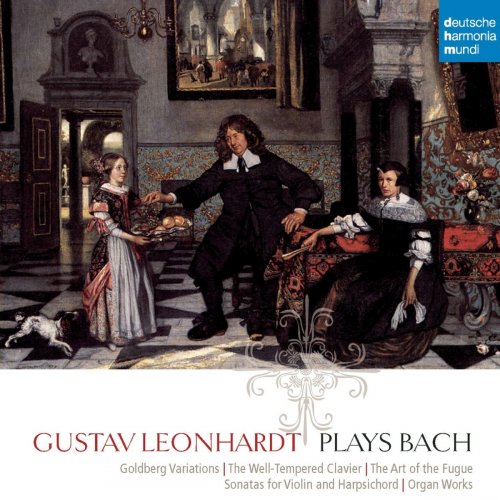

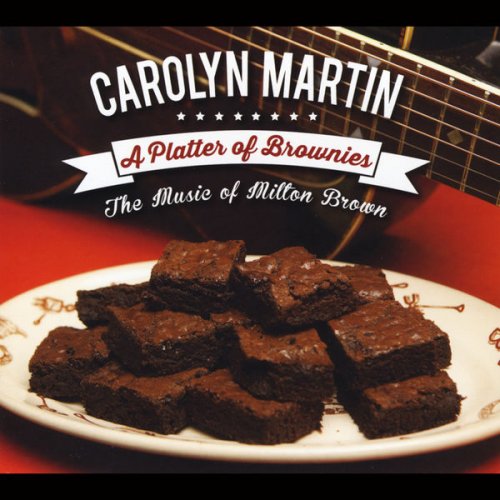
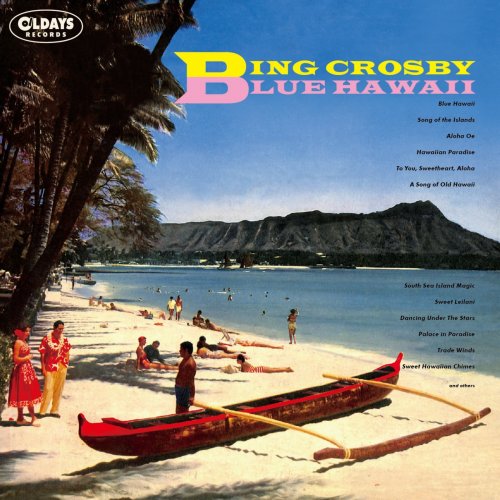
![Don Cherry, Nana Vasconcelos & Collin Walcott - Codona (1979/2025) [Hi-Res] Don Cherry, Nana Vasconcelos & Collin Walcott - Codona (1979/2025) [Hi-Res]](https://www.dibpic.com/uploads/posts/2025-12/1765970766_cover.jpg)

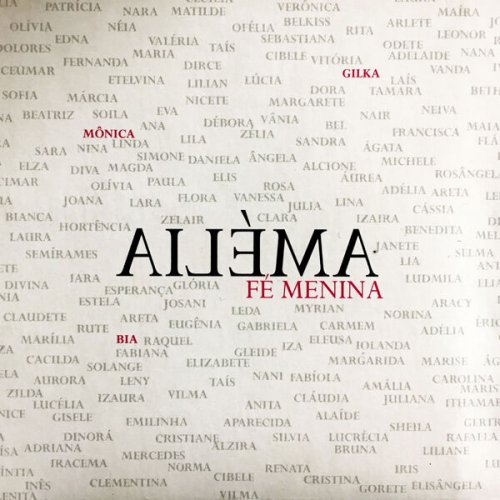
![Sibel Köse Septet - In Good Company (2025) [Hi-Res] Sibel Köse Septet - In Good Company (2025) [Hi-Res]](https://www.dibpic.com/uploads/posts/2025-12/1765846644_uizwujac4ht2d_600.jpg)

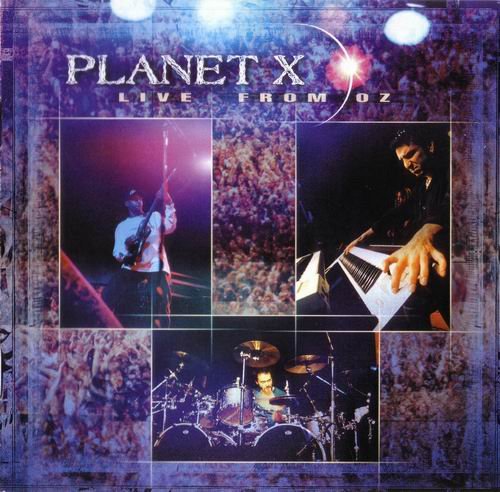
![Nectar Woode - Live at Village Underground (Live At Village Underground) (2025) [Hi-Res] Nectar Woode - Live at Village Underground (Live At Village Underground) (2025) [Hi-Res]](https://img.israbox.com/img/2025-12/15/eiazyx7yigt2lhbv1tcd3eos6.jpg)